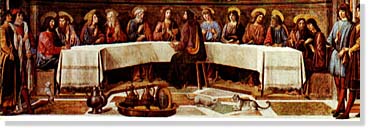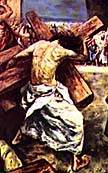Does the New Testament provide a reliable history of Christ's life?

Since it is from the New Testament that we gain our primary knowledge of Jesus, it is fitting to ask whether this literature is sound and historically accurate. Critics often describe the Gospels as pious legend, having no historical competence, and designed only for propaganda purposes. But while it is acknowledged that the Gospels are not biography in the strict sense according to 20th century definitions,[1] the following facts give immense weight to the historical accuracy of the New Testament.
Objective Scholarship Upholds the New Testament
Archaeologists studying ancient civilizations by uncovering ruins and examining artifacts, are with increasing success confirming the accuracy of the Biblical texts. Sir William Ramsey's vindication of Luke's writings is a classic example.[2] The findings of archaeology have in fact reversed the opinions of a number of former skeptics. Among these is the scholar Dr. William F. Albright, who writes:
"The excessive skepticism shown toward the Bible [by certain schools of thought] has been progressively discredited. Discovery after discovery has established the accuracy of numerous details."[3]
Recent archaeological discoveries include both the Pool of Bethesda (John 5:1f) and "The Pavement" (John 19:13). Their existence was doubted just a few decades ago. Confirmation of the accuracy of the setting of Jacob's well has also been found (John 4).[4] Such findings have caused many scholars to reverse earlier skeptical opinions on the historicity of the Fourth Gospel. Its author has demonstrated an obvious intimate knowledge of the Jerusalem of Jesus' time, just as we would expect from the Apostle John. Such detail would not have been accessible to a writer of a later generation, since Jerusalem was demolished under Titus' Roman army in 70 A.D.
Also, the recent recovery of a Roman census similar to the one in Luke 2:1f, and the historical confirmation of his “synchronism”[5] in Luke 3:1f, underscores the care Luke took in writing his Gospel (Luke 1:1-4).
[Read more about archaeological discoveries that confirm the Bible's accuracy.]
Critics of Luke's Gospel often retreat into non-verifiable and subjective opinions, but they have not overthrown Luke's historical confirmations.[6] By extension, the other two “Synoptic”[7] Gospels of Matthew and Mark, painting essentially similar portraits of Jesus' ministry, are also trustworthy accounts of his life.
Additionally, outside the Bible, Jesus is also mentioned by his near-contemporaries. Extra-Biblical and secular writers (many hostile) point to Jesus' existence, including the Roman writings of Tacitus, Seutonius, Thallus and Pliny, and the Jewish writings of Josephus and the Talmud. Gary Habermas has cited a total of 39 ancient extra-Biblical sources, including 17 non-Christian, that witness from outside the New Testament to over 100 details of Jesus' life, death, and resurrection.[8]
The Gospels Bear Internal Marks of Historical Integrity

There are also characteristics within the texts themselves which mark the four Gospels as sober history and neither legend nor fictional propaganda. Consider that the Gospel writers set the leading disciples in very poor light (Matthew 14:30, Mark 9:33f, Luke 22:54f). Notice as well that they included hard words by Jesus, which in fact repelled many hearers (Matthew 21:28f, Luke 9:23f, John 8:39f).
One distinction of the four Gospels is that their famed treasure of good news lies not nakedly on the surface, but hidden behind both challenge (Mark 8:34f, John 12:25f)[9] and threat (Matthew 25:31f). Such characteristics would have been counter-productive to propagandists. Their presence in the Gospels demonstrates the willingness of the evangelists to tell the truth, however embarrassing or inconvenient.
The Text of the New Testament Is Firmly Established
Some express concern that the Bible may have been altered down through the centuries. It is to this matter that Textual Critics address themselves. They have discovered entire manuscripts and parts of others, one portion dating to the beginning of the 2nd Century. The New Testament has far better textual support than do the works of Plato, Aristotle, Herodotus, or Tacitus,[10] whose contents no one seriously questions. In addition, the New Testament documents have always been both public, and widely-disseminated. Thus it would be impossible for any party to have materially changed their contents, just as the Declaration of Independence, for example, as a public document, could not have been privately altered without raising notice and creating public furor. Sir Frederic Kenyon, former Director of the British Museum, comments:
"The interval between the dates of the original composition and the earliest extant evidence [i.e. our oldest manuscripts] becomes so small as to be negligible, and the last foundation for any doubt that the scriptures have come down to us substantially as they were written has now been removed."[11]
In conclusion, it is not necessary that the New Testament be treated with “kid gloves” and backed up by special pleading. Simply allow it to be subject to the very same historical-critical standards that Classical historians apply to secular literature. When equal treatment is permitted its course, the Gospels fully pass the test.[12]
![]() NEXT—How do we know that Christ really rose from the dead?
NEXT—How do we know that Christ really rose from the dead?
Author: Rev. Gary W. Jensen, M.Div. Editor: Paul S. Taylor, Christian Answers. Used by permission.
References and footnotes
- N.T. Wright of Oxford University writes that the four canonical Gospels do fit into the broad genre of Hellenistic biography. See N.T. Wright, Who Was Jesus? (Wm. B. Eerdmans Pub. Co., 1992), p. 73f. [up]
- Sir William Ramsey, St. Paul the Traveller and Roman Citizen (Grand Rapids, Michigan: Baker Book House reprint; 1949 from 1894 lectures). Intent on discrediting Luke's writings, in the last century this hostile scholar traveled across the Mediterranean to that end. But he was astonished to discover that his archaeological findings confirmed the full accuracy of the customs, locations, and the governing titles (e.g. “magistrates” Acts 16:35; “proconsul” Acts 18:12) Luke had mentioned. These varied widely from region to region. Ramsey concluded, "Great historians are the rarest of writers…[I regard Luke] among the historians of the first rank" (pp. 3-4). [up]
- W.F. Albright, The Archaeology of Palestine and the Bible (Revell, 1935), p. 127. [up]
- Raymond Brown, The Gospel According to John I-XII (New York: Doubleday, 1966), p. XLII. [up]
- “Synchronism” means the tying together of unrelated events into a single timeline. [up]
- A.N. Sherwin-White, Roman Society and Roman Law in the New Testament (Oxford, 1963). Sherwin-White is a renowned Oxford historian who writes, "It is astonishing that while Graeco-Roman historians have been growing in confidence, the 20th century study of the Gospel narratives, starting from no-less-promising material, has taken so gloomy a turn in the developments of form criticism… That the degree of confirmation in Graeco-Roman terms is less for the Gospels than for [The Book of] Acts is due… to the differences in their regional setting. As soon as Christ enters the Roman orbit in Jerusalem [e.g., Herod and Pontius Pilate] confirmation begins. For Acts [authored by Luke], the confirmation of historicity is overwhelming." (p. 107f) [up]
- “Synoptic” means to describe Jesus in a similar way (syn = together; optos = sight). [up]
- Gary Habermas, The Verdict of History (Nashville, Tennessee: Thomas Nelson Publishers, 1988), p. 169. [up]
- G.K. Chesterton, Orthodoxy (Image, 1959), p. 157. [up]
- The closest we get to the original documents of each of the mentioned secular Classical writers is between 900 and 1300 years. By contrast, the “John Rylands Fragment” of the New Testament, containing John 18:31-33, has been dated as early as 115 A.D. Entire manuscripts of the New Testament can be dated to within 300 years of its completion. Virtually complete New Testament books as well as extensive fragments, can be dated to within 100 years of its close. Nearly the entire New Testament can be found in quotations by the early Christian writers. See Frederick Fyvie Bruce, The New Testament Documents: Are They Reliable? (Downer's Grove, IL: InterVarsity Press, 1972), p. 14f. [up]
- Frederick Fyvie Bruce, The New Testament Documents: Are They Reliable? (Downer's Grove, IL: InterVarsity Press, 1972), p. 20. [up]
- Military historian C. Sanders lists three tests in his Introduction to Research in English Literary History (New York: Macmillan, 1952), p. 143f. And seven factors are cited by Behan McCullagh as criteria for valid analysis of historical documents.[a] Using these sets of standards, John Warwick Montgomery[b] and William Lane Craig[c] respectively, roundly vindicate the Gospel accounts of Jesus' life, death, and resurrection. Renowned Oxford Classical historian Michael Grant, writes, "If we apply the same criteria that we would apply to other ancient literary sources, the evidence is firm and plausible enough to necessitate the conclusion that the tomb was indeed found empty."[d] And Paul Meier writes, "If all the evidence is weighed carefully and fairly, it is indeed justifiable, according to the canons of historical research, to conclude that [Jesus' tomb] was actually empty… And no shred of evidence has yet been discovered in literary sources, epigraphy, or archaeology that would disprove this statement."[e] [up]
[Also read the facts about “The Jesus Seminar” criticisms.]
- a. C. Behan McCullagh, Justifying Historical Descriptions (Cambridge University Press, 1984), p. 19f.
- b. John Warwick Montgomery, History and Christianity (Bethany, 1965).
- c. William Lane Craig, "Did Jesus Rise From the Dead?" in M. Wilkins and J.P. Moreland, editors, Jesus Under Fire (Grand Rapids, Michigan: Zondervan, 1995), p. 141f.
- d. Michael Grant, Jesus: An Historian's Review of the Gospels (Scribners, 1977), p. 176.
- e. Paul Meier, “The Empty Tomb as History,” Christianity Today (March 28, 1975), p. 5.
Copyright © 1998, All Rights Reserved—except as noted on attached “Usage and Copyright” page that grants ChristianAnswers.Net users generous rights for putting this page to work in their homes, personal witnessing, churches and schools.